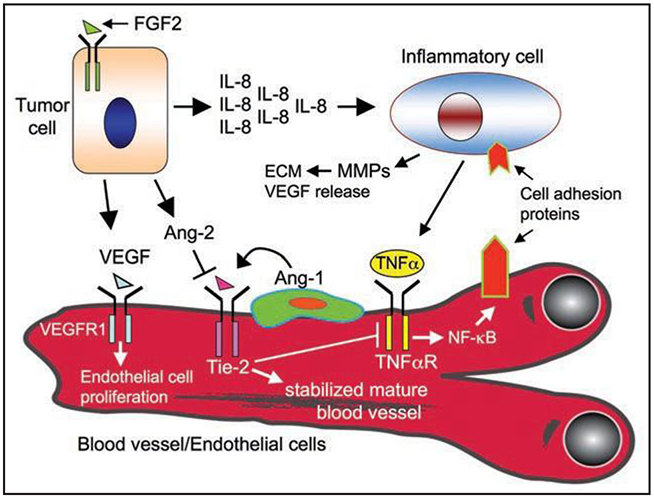Figure 3.

Activation of FGFR1 in tumor cells promotes angiogenesis. FGFR1 signaling leads to an increase in VEGF expression. Paracrine VEGF signaling by tumor cells exerts a mitogenic effect on endothelial cells and promotes migration. Moreover, FGFR1-Ras signaling within tumor cells allows for the production and secretion of IL-8, which serves to recruit inflammatory cells that can further promote angiogenesis. Another FGFR1 target, Ang2, is known to play an antagonist role distinct from Ang1 through the destabilization of the vasculature. Destabilized endothelial cells can then become sensitive to VEGF and/or TNF〈 produced by inflammatory cells.
